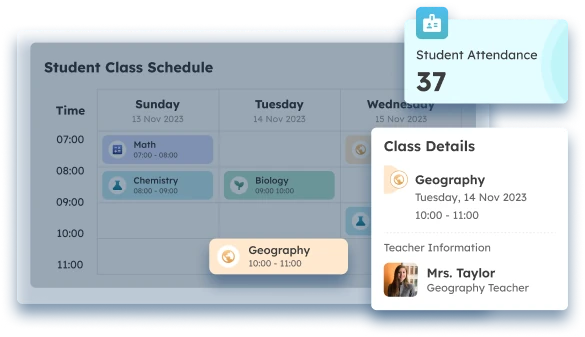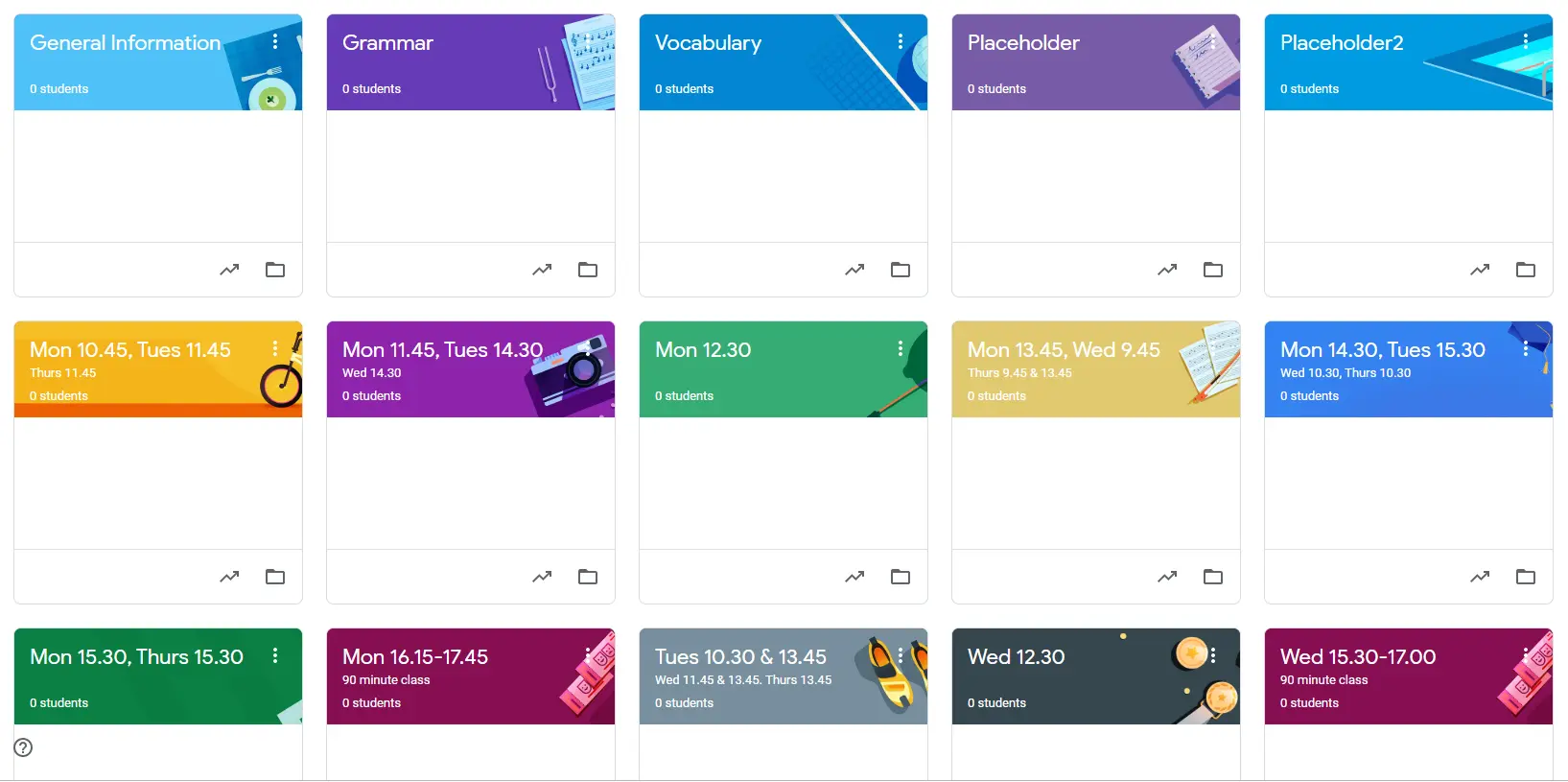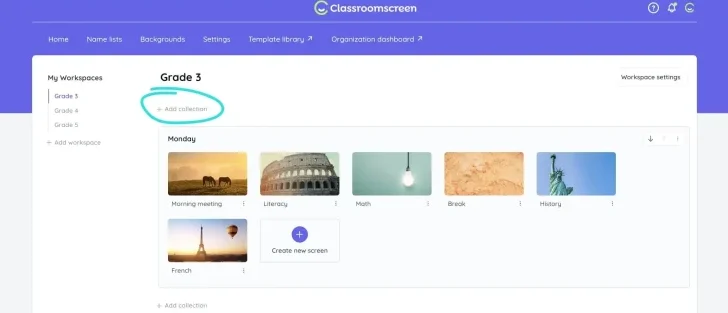Effective classroom management goes beyond just maintaining silence. It’s the core of great teaching. It’s crucial for shaping a space where students feel empowered, engaged, and truly ready to absorb new ideas. A well-managed setting is the foundation for genuine learning and student success.
According to the OECD, Singaporean schools show a high linguistic diversity, with 56% of teachers working where over 10% of students are non-native speakers, a figure more than double the OECD average (25%). Conversely, no teachers in Singapore work with refugee students, unlike the 47% average found across OECD countries.
This guide will explore various classroom management strategies that help build that productive space, and review the best classroom management software, like ScaleOcean, Google Classroom, ClassDojo, and more, looking at techniques for the whole school from the first day to the last.
- Classroom management is all about the smart strategies teachers use to keep students organized, focused, and truly productive using a comprehensive system to control it.
- Classroom management strategies rely on proactive strategies, from co-creating rules at the start of the year to building relationships and addressing issues calmly.
- Explore the best classroom management software, such as ScaleOcean, Google Classroom, ClassDojo, ClassroomScreen, Class Charts, and more.
- ScaleOcean education software leverages a comprehensive classroom system, including unified communication and support for school-wide strategies for a better learning environment.

What is Classroom Management?
Classroom management is all about the smart strategies teachers use to keep students organized, focused, and truly productive using a comprehensive system to control it. When it’s working well, you barely notice it, but the moment it’s absent, chaos can easily take over, making it almost impossible to maintain an effective learning environment.
This essential skill goes way beyond just discipline. It includes daily routines, clear classroom procedures, and even how the physical space is set up. These pieces work in harmony to foster a predictable, safe, and thriving environment that genuinely supports every student’s academic growth and success.
Why School Needs Effective Classroom Management?
Effective classroom management minimizes disruptions, maximizes instruction, and creates a safe environment for student growth. According to Mothership, a survey released on Oct. 7 found that teachers in Singapore work six hours more per week than their international peers, reflecting their dedication.
Without this foundation, based on the survey, teachers quickly face burnout, and students can become disengaged or disruptive, severely damaging the overall school culture. Good management is essential. It actively supports the core educational mission and ensures a positive learning experience for everyone.
11 Key Classroom Management Strategies

While classroom management techniques are diverse, certain core strategies establish a strong foundation. We can simplify the process for educators by breaking these strategies into three manageable stages such as the beginning of the year, continuous support, and addressing persistent issues. Here are the key strategies to help you:
1. Beginning of the year
The start of the school year is your greatest opportunity to set the tone. Investing time early to establish clear expectations and routines is key. It proactively prevents issues and ensures a much smoother, more productive year for both educators and students.
Laying a solid foundation early on minimizes classroom disruptions and actively cultivates a positive learning environment. These initial weeks are crucial for shaping student behavior, building essential relationships, and establishing the stable structure needed for success all year long. Here are some key strategies to implement at the start of the year:
a. Co-Create Rules
Instead of just presenting a ready-made list of rules, it’s often much more effective to involve students in creating them from the ground up. This method gives them a genuine sense of ownership and personal responsibility, meaning students are then more likely to follow them.
b. Establish Routines
Establishing clear routines really helps cut down on uncertainty, allowing the classroom to run much more smoothly throughout the day. Consider procedures for things like how students enter the room, where they submit their work, or even just transitioning between different activities.
c. Arrange the Space Purposefully
The physical layout of your classroom really does matter a lot more than you might think for effective classroom management. Arranging desks and learning zones to support the specific type of learning you want, whether that’s group collaboration or independent work, helps a lot.
2. During the School Year
Once you’ve set the classroom foundation, managing it becomes a continuous process needing consistent attention all year long. The main objective is to maintain that initial positive environment, keeping students fully engaged and ensuring they stay productive learners.
Teachers sustain a space for growth by reinforcing positive behaviors and staying proactive. This involves continually building strong relationships, addressing issues calmly, and keeping parents in the loop, all crucial for supporting a healthy, vibrant learning atmosphere. Here are strategies to maintain effective management during the school year:
a. Use Positive Reinforcement
It’s vital to acknowledge and praise good behavior and genuine effort whenever you see it, as this approach is usually far more effective than just focusing on negative consequences. Positive reinforcement not only helps build student confidence but also genuinely motivates them to stay on track, fostering a better learning atmosphere.
b. Make Learning Active
It’s a common observation that bored students are often the ones who start acting out, looking for something to do. The key is to keep them truly engaged with active, hands-on learning activities that really require their participation. An engaged mind, you see, is simply less likely to cause disruption.
c. Build Relationship Continuously
Truly strong teacher-student relationships are really the bedrock of good classroom management, in our experience. Taking that extra time to get to know your students as individuals makes a huge difference. A student who feels genuinely seen and respected is always more likely to cooperate.
d. Address Misbehavior Privately and Calmly
When misbehavior inevitably happens, the best approach is to address it discreetly and with a calm demeanor. Public call-outs, unfortunately, tend to embarrass students and often just escalate the entire situation, whereas a quiet, private word is often much more effective and respectful for everyone involved.
e. Keep Parents Informed
Parents are absolutely crucial partners in a student’s educational journey, forming a vital part of any effective classroom management system. It’s essential to maintain open lines of communication with them, discussing both successes and challenges. A strong home-school connection provides vital support for the student.
3. Dealing with Persistent Issues
Even with great management, persistent behavioral issues will emerge, demanding a targeted approach. Since behavior is often a form of communication, reflecting deeper struggles, these situations must be addressed thoughtfully and specifically.
Dealing with these ongoing issues requires significant patience and support. By focusing on self-regulation, knowing when to seek outside help for serious concerns, and maintaining perspective, you can effectively manage challenging behavior and foster true growth for every student. Here are strategies for dealing with persistent issues:
a. Focus on Self-Regulations
A really effective strategy is to help students actively develop their own self-regulation skills, empowering them in the long run. This means teaching them how to recognize their emotions and then effectively use coping strategies, ultimately giving them the tools to manage their own behavior, which is truly a lifelong skill.
b. Seek Assistance for Serious Concerns
Please, don’t ever be afraid to ask for help when dealing with serious behavioral concerns. You’re not alone in this. Collaborating with school counselors, administrators, and any special education staff available can provide a comprehensive team approach, which is often what’s needed to provide the specialized support a student might need to thrive.
c. Maintain Perspective
It’s completely understandable to feel frustrated by persistent behavioral issues sometimes, but it’s crucial to try and maintain perspective, always separating the behavior itself from the student. Your role is to teach and support, with patience being key in classroom management.
Core Principles of Effective Classroom Management
Effective classroom management is built upon guiding core principles that inform daily decisions. These foundational ideas create a structured, supportive system that fosters a positive learning culture. When consistently applied, the environment naturally becomes self-managing over time. Here are the core principles for effective classroom management:
1. Establish Routines and Procedures
Routines, as we’ve talked about, are truly fundamental. They practically answer the “What do I do?” question for students in nearly every classroom situation. This consistent predictability is so important, as it really helps to reduce anxiety and confusion among learners. It tends to work well across different age groups.
From entering the room smoothly to knowing how to ask for assistance, having really clear procedures is just key to a smooth day. This kind of structure actually frees up students’ mental energy, allowing them to focus on learning rather than constantly trying to figure out what they are supposed to be doing.
2. Clear Behavioral Expectations
It’s pretty straightforward: students absolutely need to know precisely what’s expected of them in the classroom. Vague guidelines, things like “be respectful,” don’t work nearly as well as specific, positive expectations. For example, “Listen while others are speaking” is a much clearer instruction. This approach tends to work well for setting the tone.
Expectations should be taught, modeled, and practiced like any academic lesson. When everyone understands the standards, meeting them becomes easier. This clarity is a core component of a well-functioning Education Management Information System (EMIS), supporting school operations.
3. Positive Reinforcement
It’s often best to consistently focus on highlighting what students are doing correctly, rather than just what they’re doing wrong. Simple gestures, like a quick verbal praise, a note sent home, or even just a thumbs-up, can build a more positive and encouraging classroom climate. It’s a powerful strategy, honestly.
Essentially, it boils down to “catching students being good,” which is a really effective mindset. This simple shift changes the whole classroom dynamic from constantly policing misbehavior to actually celebrating those good choices and efforts. It’s undeniably a powerful tool for building intrinsic motivation in students.
4. Strong Teacher-Student Relationship
Honestly, a truly positive teacher-student relationship might just be the single most crucial principle in all of classroom management. When students genuinely trust and respect their teacher, they just tend to be much more motivated to learn and to behave well. This connection is built on genuine care and understanding.
Now, this isn’t about being their friend, but rather stepping into the role of a mentor and a reliable guide for them. Showing genuine interest in their lives beyond the classroom really communicates that you care about them as individuals, not just as students. Trust makes all other management strategies more effective.
5. A Structures Learning Management
The actual learning environment itself really needs to feel structured and, importantly, predictable for students to thrive. This covers everything from lesson pacing to how materials are kept organized and even how smooth transitions are managed during the day. A well-structured environment conveys competence and control.
And you know, this whole idea of structure also extends seamlessly into the digital learning space now. A robust student information management system, like ScaleOcean, helps organize assignments and streamline communication. Its clear organization ensures alignment on academic progress, making it a key tool for schools in Singapore.

The 3 C’s of Classroom Management
The “3 C’s” of classroom management, Connection, Consistency, and Compassion, offer a powerful, solid framework for educators. These elements are interconnected. If one is missing, the entire system can feel unstable, impacting the balance of the overall classroom environment. Here are the 3 C’s of Classroom Management:
1. Connection with Students
So, first, we’ve got Connection with Students, and this is truly all about building those strong relationships we often talk about in education. It’s the absolute human element of teaching, where a real connection helps foster trust and a willingness to engage, which is truly foundational to a well-managed classroom.
When students truly feel connected, not just to you but to their peers too, they naturally develop a strong sense of belonging, which is so important. This investment makes them more active participants in the whole classroom community, helping with maintaining a positive atmosphere overall.
2. Consistency in Rules and Expectations
Then there’s Consistency in Rules and Expectations, which is really the key to making any classroom management system work smoothly. Students just need to know that the rules and also the consequences are going to be the same for everyone, every single day, and this predictability truly creates a strong sense of fairness and safety.
If a teacher isn’t consistent, students will pretty quickly pick up on that and start testing the boundaries, which often just leads to more confusion and misbehavior. Ultimately, being consistent in your classroom management techniques shows students that you are a reliable and fair leader.
3. Compassion Towards Students’ Needs
Last but certainly not least is Compassion Towards Students’ Needs, and this means truly recognizing that every student walks into your classroom with their own unique background and set of needs. It’s about understanding that behavior is often driven by so many outside factors, making it crucial to always see the child behind the behavior.
Now, this isn’t about excusing misbehavior. Let’s be clear, it’s truly about responding with empathy and offering support, instead of just resorting to immediate punishment. A compassionate approach often helps you address the real root cause of an issue, which consistently leads to more lasting positive change in the student.
Best Class Management System and Tools
Technology is key to great classroom management. It streamlines behavior tracking, parent communication, and material organization. The right tools drastically cut down on administrative work, freeing teachers to focus on vital student connection and effective instruction. Here are some of the best classroom management systems and tools:
1. ScaleOcean’s Education Management Software

ScaleOcean’s education management software offers a holistic approach to classroom management in Singapore, integrating student data, communication tools, and academic tracking. This helps administrators and teachers efficiently manage school-wide strategies for better consistency.
ScaleOcean also streamlines tasks and boosts communication, helping create a supportive, organized learning environment. Being eligible for CTC grants and offering a free demo, you can explore all its features, including the convenient customer portal for easy data access and management.
Key Features:
- Centralized Class and Teacher Scheduling: A centralized system to manage class schedules and prevent overlaps, ensuring timely and organized class sessions.
- Parent Portal Access: Parent portal for real-time tracking of academic progress and attendance, enhancing parent-teacher communication.
- Automated e-Absence Tracking: Automatically records student and teacher attendance, providing accurate and real-time data for better classroom management.
- Learning Material Upload and Access: Allows schools to upload assignments, exams, and materials, accessible anytime to support remote learning.
- Support for Distance Learning: Facilitates remote learning by enabling teachers to share resources and assignments, ensuring flexible learning options.
| Pros | Cons |
|---|---|
|
|
Best For: ScaleOcean Education Management Software is a great fit for institutions aiming to streamline admin work and enhance classroom systems. It’s perfect for schools and universities seeking efficient resource management and effective personalized learning to significantly improve student outcomes.
2. Google Classroom Software

Google Classroom is a valuable, free tool for educators, streamlining assignment management and communication. It simplifies the distribution and collection of work, aids in academic tracking, and generally streamlines the entire educational process for both teachers and students.
Although not explicitly designed for behavior control, the platform’s organizational features contribute to a more structured learning environment. By ensuring academic tasks are clear and readily accessible, Google Classroom effectively minimizes student confusion and reduces classroom disruptions.
Key Features:
- Assignment distribution and tracking
- Communication tools for students and teachers
- Integration with Google tools (Docs, Drive, etc.)
- Timely feedback features
- Easy-to-use interface
| Pros | Cons |
|---|---|
|
|
Best For: Google Classroom is suitable for educational institutions that need a simple and efficient system for managing assignments and communications, particularly in settings where integration with other Google services is beneficial.
3. ClassDojo Platform
ClassDojo centers on positive reinforcement and streamlines parent communication. Educators utilize the platform to acknowledge students for constructive behaviors and specific skills, which helps cultivate an overall positive classroom culture.
The platform includes a messaging feature that allows teachers to conveniently share updates and photos with parents, ensuring families are kept informed about their child’s ongoing progress. This approach supports student engagement and encourages parental involvement in learning.
Key Features:
- Points system for tracking behavior
- Parent communication tool
- Customizable classroom settings
- Ability to send photos and updates
- Student behavior tracking and reports
| Pros | Cons |
|---|---|
|
|
Best For: ClassDojo is ideal for schools and teachers seeking a simple tool to encourage positive student behavior and enhance parent communication, especially in primary or early secondary education environments.
4. ClassroomScreen Tools

ClassroomScreen is a web-based tool offering a customizable interface with helpful widgets. Features like timers, random name selectors, and noise level monitors assist teachers in smoothly managing transitions and organizing student tasks during instruction.
These tools provide clear visual cues that support classroom management, helping students maintain focus and stay on task. ClassroomScreen proves helpful for regulating the classroom environment during activities, promoting smoother transitions, and improving student attention.
Key Features:
- Customizable classroom screen
- Timer and stopwatch features
- Random name picker for participation
- Noise level monitor
- Easy-to-use interface for teachers
| Pros | Cons |
|---|---|
|
|
Best For: ClassroomScreen is best suited for teachers looking for a straightforward tool to manage classroom transitions and student focus, particularly in elementary or middle schools, where visual cues can enhance student behavior.
5. ClassCharts Classroom Management Tools
Class Charts offers a data-driven system for managing behavior and seating arrangements. Teachers can track both positive and negative student actions, using the collected information to discern key behavioral patterns that develop throughout the school year.
This insight enables teachers to implement focused interventions and refine classroom strategies. The system also includes tools for monitoring homework, structuring seating plans, and facilitating communication between the teacher and parents effectively.
Key Features:
- Behavior tracking and analysis
- Seating plan management
- Homework tracking
- Parent communication tools
- Customizable reports
| Pros | Cons |
|---|---|
|
|
Best For: Class Charts is best for schools that need a data-driven tool for managing classroom behavior, seating arrangements, and parent communication, especially for teachers who require deeper insights into student behavior patterns.
Also Read: Top 10 School Management System in Singapore
Conclusion
Great classroom management is about building a respectful community, not just control. It begins with proactive steps like co-creating rules and establishing routines, then continues through consistent expectations and fostering strong, positive relationships daily.
Classroom management can be complex, but when executed well, everyone benefits, students and teachers alike. Solutions like ScaleOcean’s education management software help create these organized, supportive classrooms. They also offer a free demo as well so you can explore their features and benefits firsthand.
FAQ:
1. What are the 6 main features of classroom management?
1. Clear Expectations: Set consistent behavior and academic guidelines.
2. Organization: Structure the classroom to reduce distractions.
3. Effective Communication: Ensure open dialogue with students and parents.
4. Positive Reinforcement: Reward desired behaviors.
5. Consistency: Apply rules fairly and consistently.
6. Proactive Strategies: Prevent issues before they arise.
2. What are the 4 types of classroom management?
1. Authoritative: Balanced expectations with support.
2. Authoritarian: Strict control with limited student input.
3. Permissive: Minimal rules, more freedom for students.
4. Neglectful: Little involvement or structure.
3. What are the 5 P’s of classroom management?
1. Preparation: Plan lessons to keep students engaged.
2. Prevention: Use strategies to avoid misbehavior.
3. Positive Reinforcement: Reward good behavior.
4. Persistence: Stay focused and consistent.
5. Patience: Remain calm during challenges.
4. What are the 5 R’s of classroom management?
1. Respect: Foster mutual respect.
2. Rules: Define expected behaviors clearly.
3. Reinforcement: Reward positive actions.
4. Relationships: Build supportive teacher-student bonds.
5. Reflection: Regularly assess and adjust strategies.







 PTE LTD..png)
.png)

.png)








.png)
.png)
















